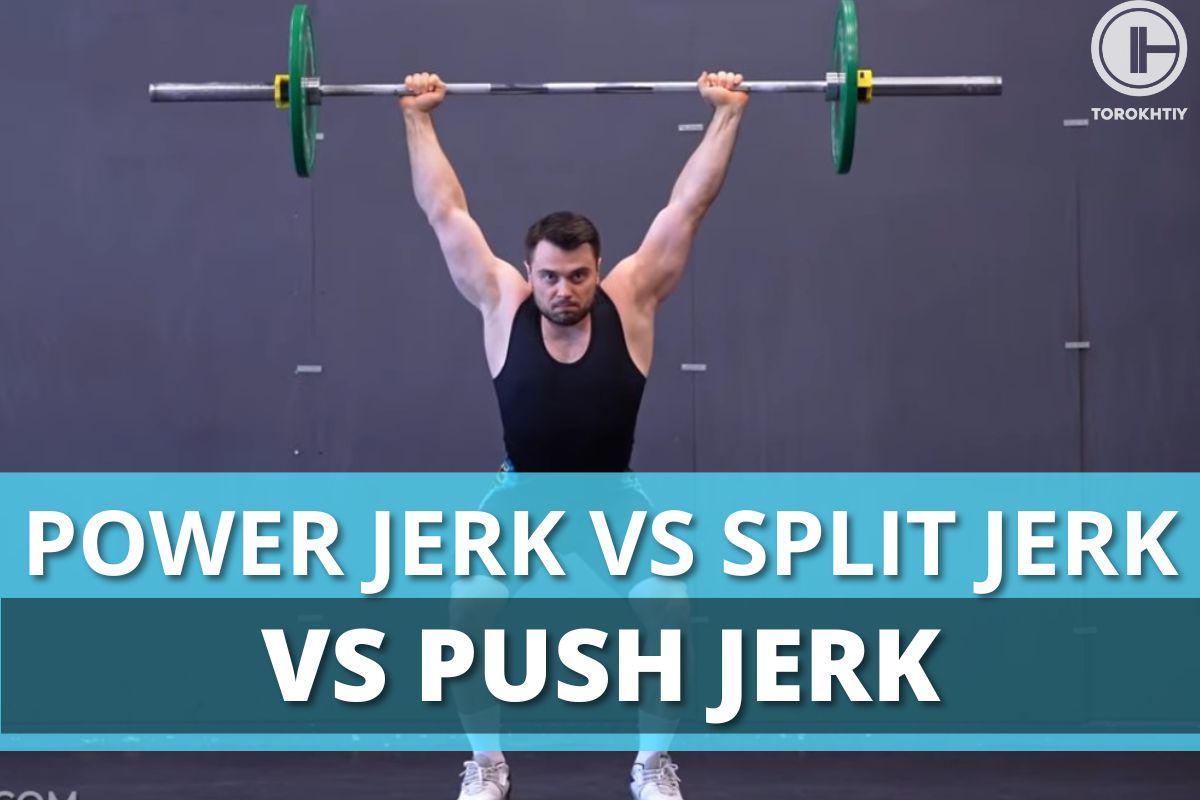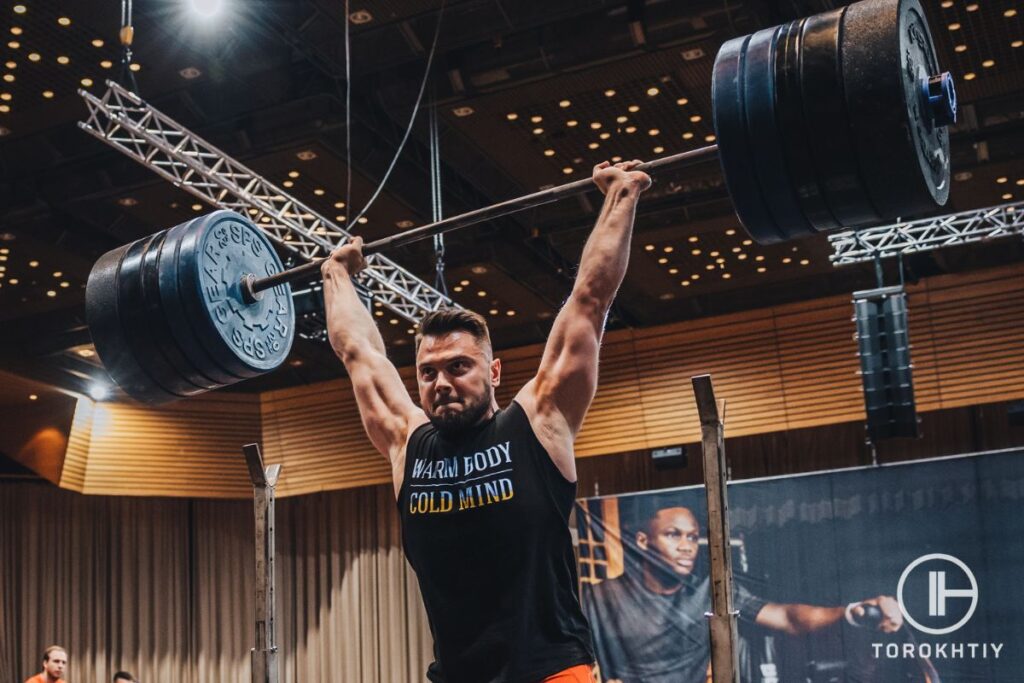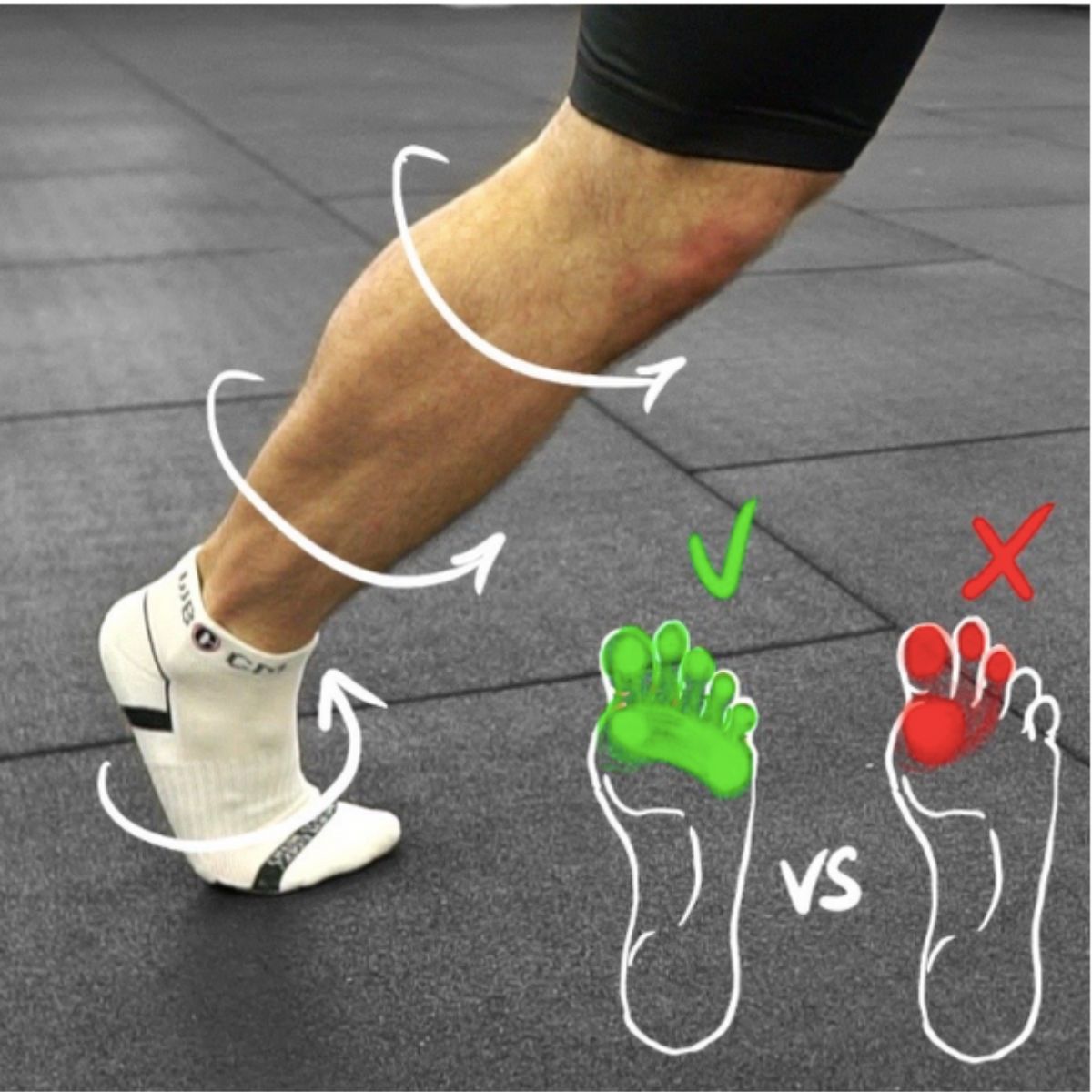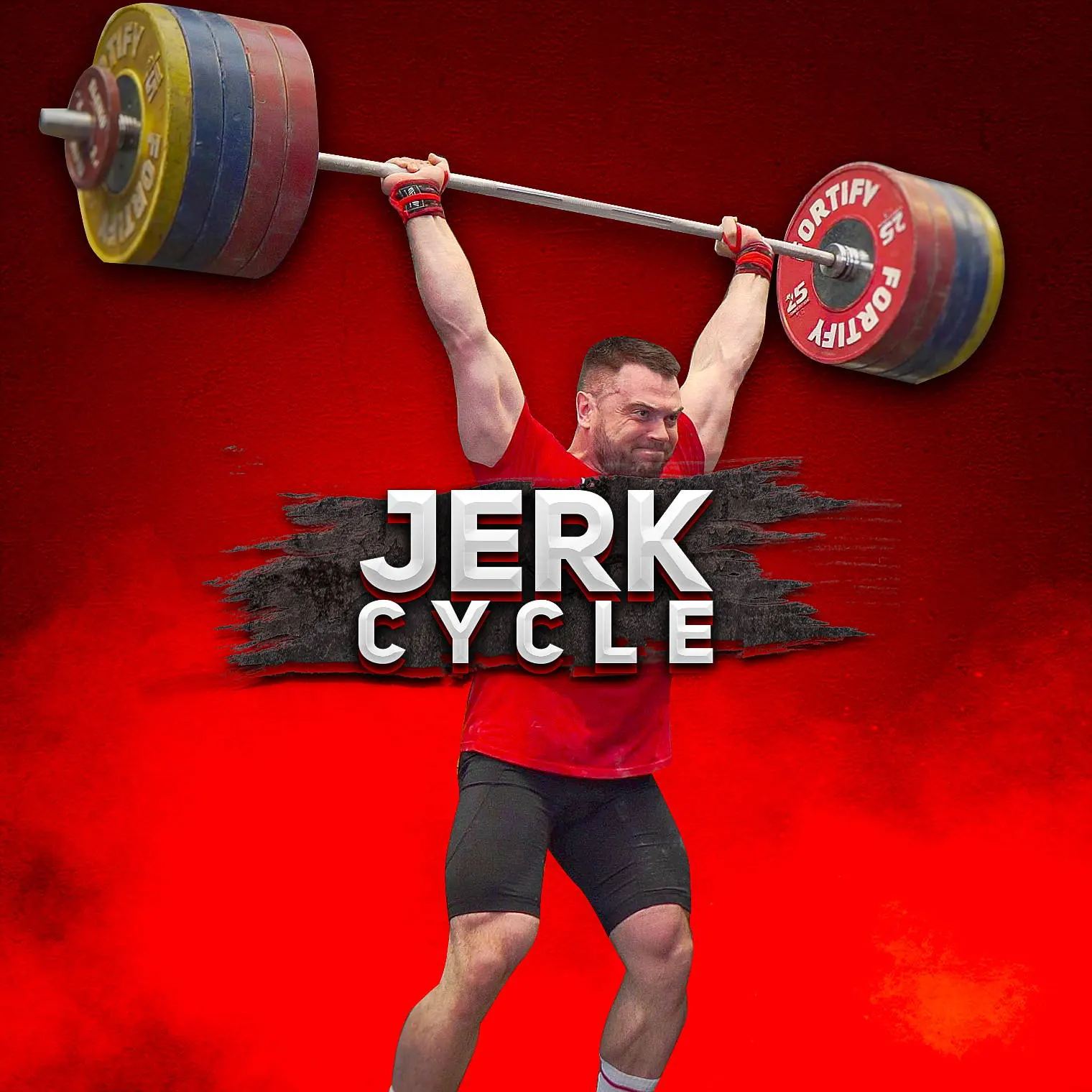Power Jerk vs Split Jerk vs Push Jerk: Technique, Benefits & Common Mistakes
Author:
Reviewed by:
(21 years of Oly Lifting experience)
Unlock your full potential by engaging with our experts and community! Have questions about your fitness journey or looking for expert advice on weightlifting techniques? Don’t hesitate — leave a comment below and Jacek Szymanowski will provide a personalized answer and insights to help you reach your goals.
Torokhtiy is reader-supported. Some links are affiliate links, and we may earn a commission at no extra cost to you. See our disclosure page for details.
In the realm of Olympic weightlifting and functional fitness, the jerk is a crucial movement for developing explosive power and body strength. However, there are several variations of the jerk, each with its own unique technique and benefits. The power jerk, split jerk, and push jerk are three common variations that lifters use to achieve their training goals.
If you want to decide which one will work the best for you, you first need to understand their differences. And that’s exactly what this article is dealing with, so keep reading to learn all there is to know about these jerk variations.
Power jerk vs split jerk vs push jerk – They differ mainly in their foot action and positioning during the catch phase. In the power jerk, you catch the bar in a half/deep squat with feet slightly apart. The split jerk involves catching the bar in align with one foot forward and one back. In the push jerk, the lifter catches the bar without feet movement, remaining in line and a deeper squat.

Power Jerk Vs Split Jerk vs Push Jerk
“What is better for me: to power jerk vs split jerk vs push jerk” is one of the top questions at all of my seminars. This is quite natural since the two exercises are visually and technically different, but at the same time, many athletes use both the split jerk and power jerk.
Many weightlifters try different styles and over time decide that each exercise has its strengths and weaknesses. Also, some athletes have an individual preference “I like and want to do just push jerk,” as well as anatomical and functional prerequisites: strength and speed qualities, coordination, flexibility, mobility.
The push jerk adds another dimension to this discussion. Unlike the power jerk and split jerk, the push jerk involves catching the bar without feet movement, staying in line and going into a deeper squat to secure the bar overhead.
This variation emphasizes quick, powerful leg drive and a quick transition under the bar, so it’s usually the choice for athletes who prefer a more dynamic movement with less reliance on split stance stability.
I will try to clarify everything about split jerk vs power jerk vs push jerk in this article.
What Is the Power Jerk?
The power jerk is one of the 3 techniques used to perform the second part of the clean & jerk (the Olympic weightlifting exercise).
In order to perform the power jerk, athletes complete the dip and drive phase, pushing a bar upward, and then go down to the dip again to catch the bar overhead, squeezing their shoulder blades. They keep their legs in the same line, just driving them slightly apart to go under the bar. After receiving the bar, they recover and finish the lift.
What Is the Push Jerk?
Some athletes also ask me about the power jerk vs push jerk. Weightlifters often refer to the same exercise with both of these names. However, there is one slight difference between these two movements, though they usually look very alike.
In the first case, athletes spring off the platform to move their legs to the sides and perform a dip. In the latter, your feet stay in place throughout the whole movement, only your heels can rise a bit.
What Is the Split Jerk?
The split jerk is the most popular jerk technique in Olympic weightlifting. It is considered the most reliable and stable way to lift maximum weights for most athletes. Overhead press strength, squat strength, and a combination of squat and overhead press strength can all be an indication of the split jerk performance.
After the dip & drive phase, one drives their legs in different directions similar to the lunge – one goes forward and the other one moves back. You should catch and fix the bar overhead in this position.
After that, you pull your legs together, stretch your knees, and lower the bar on the platform to finish the lift.
Save it for easy access!
Bookmark this page now to access the program and instructional videos anytime, anywhere.
Stop wasting time searching during your gym sessions.
What Is the Squat Jerk?
The squat jerk is the least popular technique of the jerk. It is considered more demanding in terms of coordination, balance, and mobility as well as leg strength if we talk about squat jerk vs split jerk.
In order to perform the squat jerk, do everything as if you are going to power jerk but after the drive, you go down to the deep squat position to catch the bar there. After a successful catch you recover – stand up from deep squat keeping the bar locked over your head
Many athletes who power jerk are sometimes forced to perform the squat jerk if a heavy weight is pressing them down to the platform. It is quite unpredictable so you should practice rising from the hole even if you choose the power jerk.
Power Jerk vs Split Jerk vs Squat Jerk vs Push Jerk
It is unlikely that someone will explain to you exactly why it is better to split or power jerk. History knows many world-class athletes who changed their jerk style several times. I suggest analyzing and comparing these styles to form a conscious understanding that will help each athlete to make the right choice in favor of a particular style.

In the first few years of training, inexperienced athletes should use everything in their program: the traditional power Jerk, squat jerk, push jerk, and also split jerk on both legs. This will help develop coordination and flexibility, strengthen stabilizer muscles, and increase functionality. Over time, the desire and feeling of movement will help you choose one of the exercises.
Still, I have explained and compared the main benefits and drawbacks of all jerk styles below.
Follow us!

Free!
Get a 2-week Weightlifting Program as a bonus for the subscription to kickstart your training plan!

Free!
1. Power Efficiency
Let’s start with the main advantage of the split jerk – power efficiency. While working with maximum weight, athletes who stick to the power or push jerk are forced to catch the bar as low as possible, often in a deep squat position. Imagine that after the hardest clean, an athlete performs a jerk and again finds themselves in the hole from which they need to recover again.
Not everyone has enough strength to handle it. From this point of view, the split jerk is far more beneficial.
2. Stability
The split jerk has another advantage – stability due to the significant height of the bar fixation and the large support area. In my opinion, this can explain the fact that, according to statistics, women are more likely to use the split jerk.
As compared to men, they have a lower “reserve of strength”. It is also important to remember that perfect technique can compensate for the lack of strength. The push jerk offers stability similar to the power jerk, with the feet remaining in place during the lift. This creates a stable base, although not as wide as the split jerk.
3. Mistake Resilience
Another significant advantage of the split jerk is the ability to complete the lift even after some small technical mistakes. A common and frequent mistake is a short dip and drive, after which the bar is slightly ahead, and the athletes are forced to “catch it up”. Many athletes do it successfully from the split position. In a power or push jerk, this is almost impossible.
4. Amplitude
Speaking about the disadvantages of the split jerk and the advantages of the power jerk, we must focus on the amplitude of dropping in the squat position with the barbell directly over your head. In the split jerk, this height is limited by the depth of the lunge at which the athlete can stably balance under a heavy weight.
Athletes in the light and medium weight categories who power jerk, as a rule, work on the fixation of the bar in a deep squat position as well, which allows them to lift the heaviest weights successfully. To tell the truth, if an athlete power or push jerks he must be ready to squat jerk, and not only theoretically.
5. Mechanics and Coordination
An important advantage of the power or push jerk is simpler mechanics and coordination of the movement: the action is performed in one plane. The angles and structure of the movement have many similarities to the squat. The split position has a more complex structure and a lot of technical variations both in the work of the feet and in the coordination of the whole body.

So What Should I Choose?
I will give advice to beginners according to the experience of the Soviet weightlifting school, which I consider one of the best. The most effective way to figure out which jerk style is best for you is to try everything.
Generally, if an athlete has a good leg-strength reserve, then a squat or push/power jerk may be their best choice and a study from Research Quarterly for Exercise and Sport has shown that master lifters have a shallower squat. If the athlete is agile and coordinated, they should concentrate on the split jerk. And I definitely would not recommend the power jerk for tall athletes.
What jerk style do you find the best and why? Share your thoughts in the comment section!
Conclusion
If you were hoping to get a definitive answer which one is better, you’re probably a bit annoyed right now because there isn’t one. Each technique has its benefits and can be more suitable depending on your needs and preferences. Although the split jerk is the most popular, it might not work for you, but it’s a good starting point. After all, if so many people like it, chances are, you will, too.
But be prepared for some trial and error. Take your time, try everything and then decide what you like best.
References:
- Greg Nuckols “Is your split jerk limited by upper body or lower body strength?” Stronger by Science, https://www.strongerbyscience.com/research-spotlight-split-jerk/ (accessed July 22nd, 2024)
- Marcos A. Soriano, Timothy J. Suchomel, Paul Comfort, “Weightlifting Overhead Pressing Derivatives: A Review of the Literature,” Sports Medicine 49, no. 6 (2019): 867–885. Published online March 28, 2019.
- Stephen Grabe, Carol J. Widule, “Comparative Biomechanics of the Jerk in Olympic Weightlifting,” Research Quarterly for Exercise and Sport 59, no. 1 (1988): 1-8.
- Photos by Torokhtiy Media Team.
Why Trust Us?
With over 20 years in Olympic weightlifting, strength training, nutrition coaching, and general fitness our team does its best to provide the audience with ultimate support and meet the needs and requirements of advanced athletes and professional lifters, as well as people who strive to open new opportunities and develop their physical capabilities with us.
By trusting the recommendations of our certified experts in coaching, nutrition, and sports training programming, as well as scientific consultants, and physiotherapists, we provide you with thorough, well-considered, and scientifically proven content. All the information given in the articles concerning workout programming, separate exercises, and athletic performance, in general, is based on verified data.
The product testing process is described in more detail here.
Author: Jacek Szymanowski
Certified Nutritionist,
M.Sc.Eng. Biotechnology
Performance Architect,
Strength and Conditioning Specialist
With over 30 years of fighting experience, specialization in nutrition coaching for athletes, and expertise in metabolic health and dietary strategies, Jacek offers a comprehensive approach to optimizing your performance and well-being. Backed by a Master of Science degree in Biotechnology, Jacek remains at the forefront of scientific advancements, ensuring that his coaching is always evidence-based and up-to-date.
Reviewed by: Oleksiy Torokhtiy
Olympic Weightlifting Champion, PhD in Sport Science
Best Results: Snatch – 200 kg,
C&J – 240 kg
Oleksiy Torokhtiy is a professional athlete boasting 20 years of experience in Olympic weightlifting. With multiple European and World titles under his belt, he has showcased his prowess in two Olympic Games (Beijing 2008 and London 2012). Upon concluding his illustrious career, Oleksiy dedicated himself to coaching. By 2022, he had conducted over 200 weightlifting seminars worldwide. He is the visionary behind an international sportswear and accessories brand known for its motto, “Warm Body Cold Mind.” Additionally, he is an esteemed author and the creator of a series of training programs and eBooks.





Still have questions after reading our article? Unlock your full potential by engaging with our experts and community! Don’t hesitate — leave a comment below and Jacek Szymanowski will provide a personalized answer and insights to help you reach your goals.